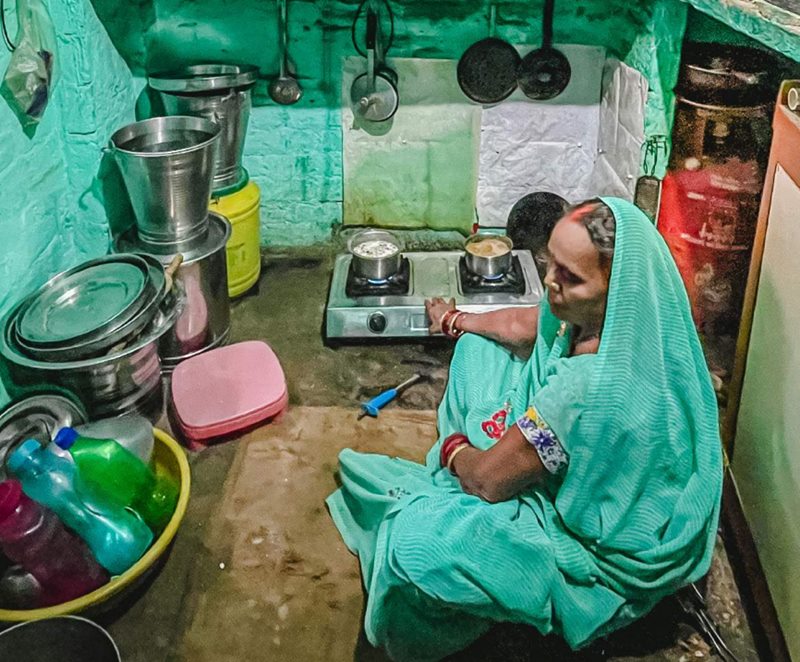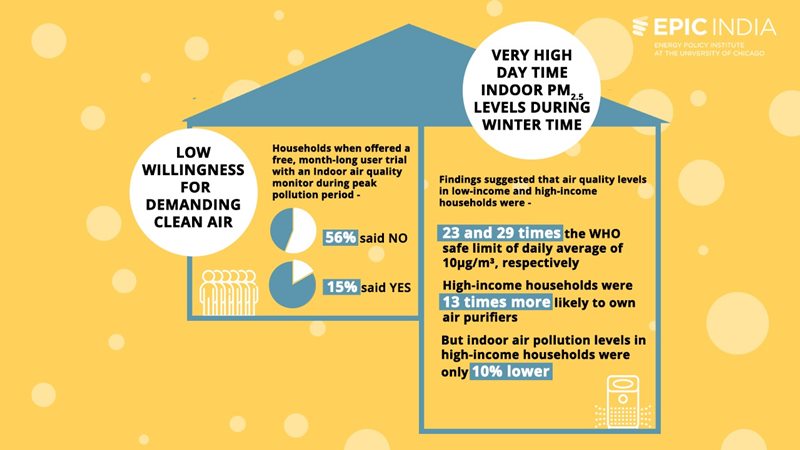Ambient air pollution aside, PM2.5 levels in Delhi’s households are up to 29 times beyond WHO’s safe limit
EPIC-India’s new study has found that the indoor air pollution (PM2.5) levels in low and high income households in Delhi was 23 and 29 times the WHO safe limit of 10 μg/m³, respectively. Meanwhile, 56% of surveyed households declined the free, month-long user trial with indoor air quality monitors.


The study noted that indoor PM2.5 levels tend to spike when households are most likely to be cooking. Photo: CEEW
Rich or poor, no one gets to breathe clean air in the national capital of the country, as indoor air pollution levels in the households of Delhi are very high. This has been indicated in a new study by a Delhi-based research institute, Energy Policy Institute at the University of Chicago, India (EPIC-India). Poor ambient air quality is already a huge concern in the metropolis.
The new study, released on December 8, pointed out that the indoor PM2.5 (particulate matter with diameters that are generally 2.5 micrometers and smaller), the most damaging form of air pollution, levels for low-income and high-income households in Delhi were very high during the wintertime. Researchers found that the mean concentration of PM2.5 in high and low income households was 29 and 23 times the World Health Organization (WHO) safe limit of 10 micrograms per cubic metre (μg/m³), respectively.

“In Delhi, the bottom line is – whether someone is rich or poor, no one gets to breathe clean air,” Kenneth Lee, the lead author of the study, was quoted in its press statement.
Also Read: ‘Air pollution shortening lives by about 10 years in Delhi and UP’
Findings suggested that high-income households were 13 times more likely to own air purifiers than low-income households. And yet, the indoor air pollution levels in those homes were only 10 per cent lower than those living in disadvantaged settings.

Also, the EPIC-India study noted that indoor PM2.5 levels tend to spike in the mornings and evenings when households are most likely to be cooking.
Also Read: 54% Indian households still using firewood, cow dung as cooking fuel: Study
Low willingness to demand clean air
The new research has also indicated that demand for air pollution information and defensive technologies may be low among India’s national capital residents.
“It’s a complex vicious cycle. When you do not know about the pollution levels inside your homes, you do not worry about it, and hence you are less likely to take corrective actions. Only with increased awareness, demand for clean air may gain momentum,” Lee added.
As part of the study, more than 4,000 households in the national capital were surveyed between 2018 and 2020 across varying socioeconomic strata.
Researchers observed that even when offered a free trial of indoor air quality monitors to track pollution levels inside their homes, the take-up rates were low.
The study showed that 56 per cent of surveyed households declined the free, month-long user trial with indoor air quality monitors. “This when the study was carried out during Delhi’s peak air pollution period,” stated the researchers.
The EPIC-India study also revealed that the indoor PM2.5 levels were substantially higher than the corresponding value reported by the nearest government monitor.
“It’s critical to address the information gaps related to indoor air pollution urgently,” said Lee, adding: “High-frequency accurate PM2.5 information communicated through either government monitor or by indoor air quality monitors is the first step but only when it is complemented with an increase in literacy around health consequences of air pollution and the benefits of adopting various defensive actions – can we expect more favorable outcomes.”

